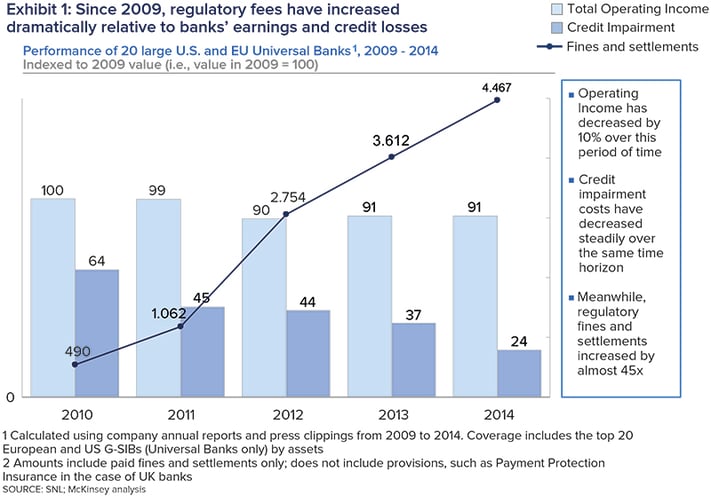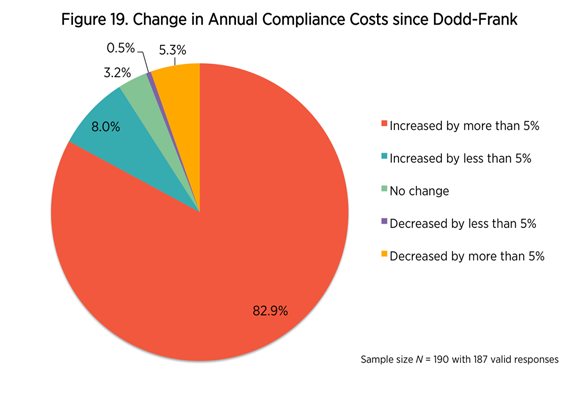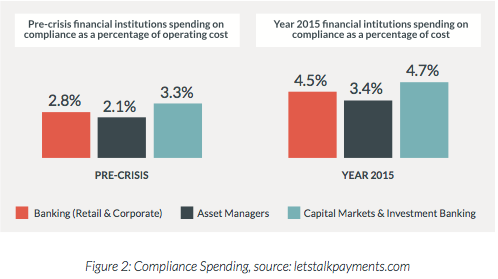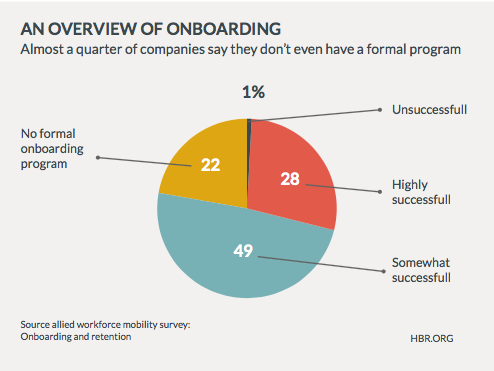In the world of banking, compliance went from a niche division often operating behind the scenes, to one of the most important departments responsible for the day to day health of a bank. While compliance departments have been around since the turn of the century, the modern rise of compliance costs stem directly from a series of high-profile financial frauds and lack of regulatory oversight that led up to and proceeded the financial crisis of 2007-2008.

In 2001, Enron’s infamous accounting scandal led to a new wave of compliance priorities within banks – priorities that were previously at the bottom of the list. A 2005 study by the Open Compliance and Ethics Group found that 54% of all compliance and ethics programs were created after Enron’s collapse. Just as compliance departments were maturing, another crisis hit.
In 2008, the global mortgage and financial crisis became the worst economic crisis in history since the Great Depression. this led to another stark realization – all of those programs enforced post-Enron did not help to prevent another catastrophic failure. Now, banks must create preventative and effective compliance training. If they don't, they will be at risk of regulatory fines that have increased by 45X over the past few years:

Compliance at It’s Core: A Staple of Company Culture
The Basel Committee on Banking Supervision defines compliance risk as “the risk of legal or regulatory sanctions, material financial loss, or loss to reputation a bank may suffer as a result of its failure to comply with laws, regulations, rules, related self-regulatory organization standards, and codes of conduct applicable to its banking activities.”
In modern banks, compliance includes risk management, legal, ethics, and human resources departments. At its core, compliance should stem down from the top of the organization as a pillar of company culture, including both internal codes of conduct and abidance of state and federal regulations. By placing ethics at its core, a bank prioritizes business that is transparent, lower risk, and law abiding.
Besides formal compliance teams and functions, each banking employee now has a responsibility to be well versed in internal and external policies. This has created the need for specialized training and onboarding for employees and the increased use of technology to help.
The Current Compliance Costs Within Banks
In 2015, Thomson Reuters surveyed 600 compliance practitioners around the world and found that 69% expect the cost of senior compliance professionals to increase. This is largely due to a current shortage of talent. Rising costs have also take a toll on smaller banks with roughly 83% of small banks reporting higher compliance costs since the passing of Dodd Frank, a federal Wall Street reform enacted in 2010.

Figure 1 Source: Mercatus.org
The rise in need and shortage of senior compliance talent has created a frenzy. In 2014, the Wall Street Journal called “Compliance Officer” the hottest job title in America. Additionally, a quick search on LinkedIn found over 400,000 open compliance positions.
The implications of these numbers suggest the increased hiring of non-traditional compliance professionals to fill the talent gap. More companies are creating compliance teams to hedge their risk and avoid another financial collapse.

How Mobile Technology Can Cut Compliance Costs For Banks
- Reduced Training Costs Using Mobile Applications
In 2014, JP Morgan provided 800,000 hours of compliance training to its staff in their mortgage department alone. At an average cost of $45/hour for compliance training, these figures equate to over $35 million of training costs for one bank alone.
Mobile technology, such as gamification applications and eLearning solutions, can be acquired at an enterprise level and rate that allows scalability across a bank of any size. Each training can be deployed at different parts of a bank to target specific goals, eliminating the need of long and often tedious trainings.
- Increased Efficiency and Flexible Learning
Mobile technology allows for tailored learning styles and pace. A 2015 survey by Intercall found that 47% of employees want to learn at their own pace. By replacing traditional banking and onboarding procedures with technology, banks can leverage the flexibility of technology to save money on travel expenses, formal training seminars, trainers, and more common costs.
Additionally, mobile training applications can be accessed anytime – on the subway, after hours, during lunch, and more.
- Knowledge Retention
One of the most expensive aspects of training is the rapid loss of knowledge and re-education that is needed to maintain a well-trained workforce. The average bank employee receives 31 hours of training a year, not including constantly changing compliance training that reflects changes in financial regulation and internal policy.
Currently, it is estimated that only 16% of training information is retained after three months using traditional training methods. Mobile gamification solutions have been proven to increase knowledge retention by as much as 24% within 5 days of a mobile training.
- Employee Retention Through Optimized Onboarding
The average cost to hire and onboard a new hire is nearly $4,000 in a professional service related role. With an average annual turnover rate of 17.4% , the financial services industry has one of the worst retention rates globally. This makes training retention even more important.
For new compliance professionals and bank staff, retention can be optimized through a smooth onboarding and training process that utilizes technology as both an optimization and knowledge retention tool. The risk of having a stale or confusing onboarding process has been proven to lead to higher voluntary job loss rates within 6 months.

Key Takeaways:
- Compliance professionals are in high demand and expensive to hire
- Most banking professionals are expected to have some compliance training
- Compliance training and onboarding can be optimized using mobile technology
- Mobile technology offers flexibility and cost savings for banks to utilize and adapt
How are financial institutions onboarding employees in a time of increasingly complex compliance and regulation? What's technology's impact and how are companies already using it?
- State of the industry's technology
- Banks & mobile apps: can they benefit?
- Onboarding and innovation in banking
- Onboarding implementations
- 10 facts on retention, training, and talent sourcing
- Exclusive TLDR summary





.jpg)
.jpg)
.jpg)

